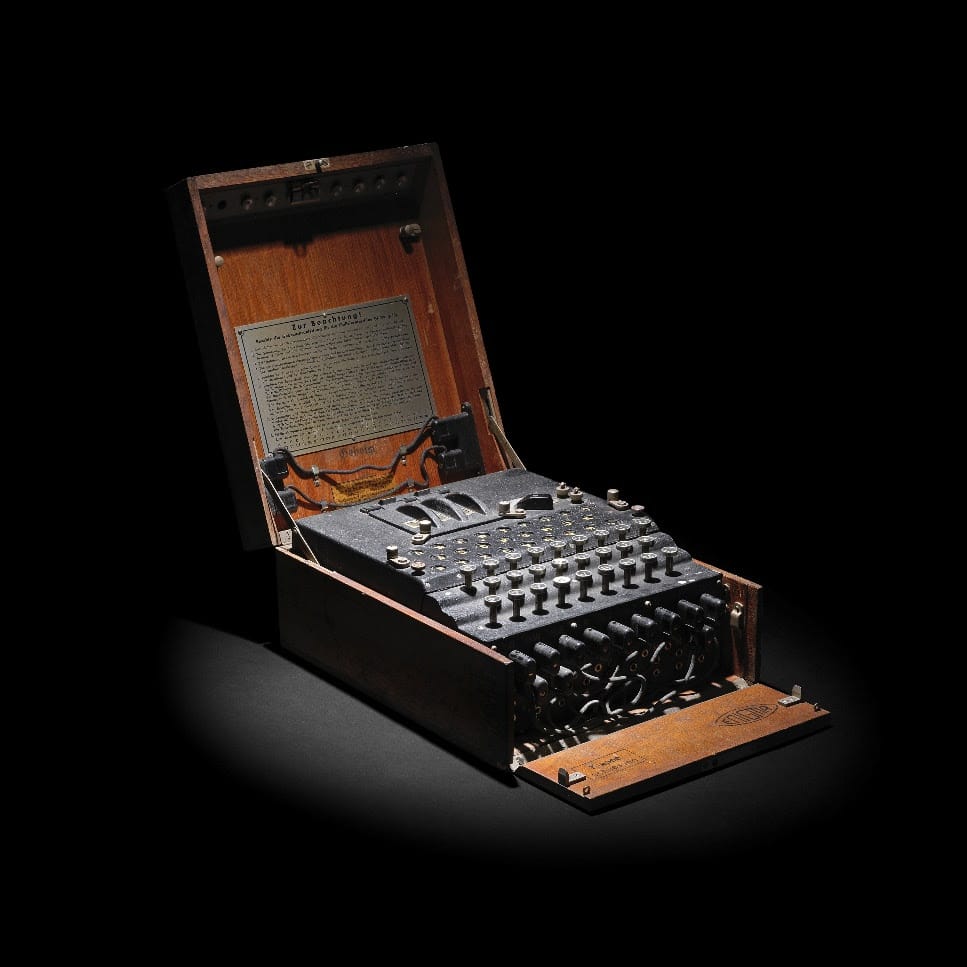London – Enciphering and deciphering technology was developed long before and after the Enigma machine, the cracking of which cleared the path to victory for the Allies in World War Two. In the case of two Enigma machines in this upcoming auction, they were used by the Norwegian secret police long after peace was declared. A selection of these cipher machines will lead the Instruments of Science and Technology sale at Bonhams in Knightsbridge. The 85-lot sale on 28 September highlights significant points in the discovery of technology’s potential, offering both vintage instruments and complex modern devices.
The stars of the sale will be the two German Enigma machines, a Heimsoeth und Rinke 3-rotor Enigma cipher machine, Berlin, 1938, and a later model, a Heimsoeth und Rinke 3-rotor Enigma cipher machine, Berlin, 1942, each with an estimate of £75,000-100,000. The Enigma machine was used to code and decode messages so that classified information could be transmitted securely. With millions of potential combinations, they were thought impossible to crack. The story of the Bletchley Park codebreaking unit and the genius of Alan Turing, who helped to solve the problem by developing the proto-computer called the bombe, is one of the greatest achievements during World War Two.
Joseph Robson, Bonhams Specialist for Scientific Instruments, commented, “The extraordinary range of cipher machines offered represents an important part of military history, and demonstrates how far we’ve come in terms of technology in a short period. Many of these instruments still stand up against their modern equivalents, thanks to inventors who were ahead of their time.”
Adding to a strong group of cipher equipment in the sale is a rare system Beyer Krypto pocket watch cipher, Danish, circa 1933, estimate £8,000-12,000. Produced by Cipher Machine Co. Ltd. of Copenhagen, the watch is one of only half a dozen known to exist. The case, made of polished nickel, has two dials with the alphabet, and a third with figures and punctuation marks. These disks are moved in relation to each other by two springs and rotated using a release spring.
Other highlights include:
- Among the most prolific of all machine tools, an ornamental turning lathe by Holtzapffel & Co, 64 Charing Cross, no. 2040, 1859, estimate £8,000-12,000, is another top lot. The lathe is a large-scale machine used to shape wood or metal, performing multiple operations by rotating the workpiece around an axis against a stationary cutting device. This is a beautiful traditional example, which includes an iron bed and double mahogany stand, an integral six-drawer chest, treadle gear, crank and flywheel, as well as a ‘shepherd’s crook’ overhead.
- The multiple cameras in the sale are a fascinating insight into the development of photography over the late 19th and 20th centuries. Of particular importance is a rare Nikon 1 camera, Japan, 1948-1949, estimate £10,000-12,000, one of the most collectible cameras ever made. The Japanese firm Nippon Kogaku’s first Nikon camera, the company was renamed to match this model following its success. A limited production window of March 1948 to April 1949 meant only a few hundred examples ever actually reached the market, and each one has the “made in occupied Japan” stamp, reflecting Japan’s post-war status under American jurisdiction.
- A pair of Gabriel Wright and William Bardin terrestrial and celestial table globes, English, 1782-1785, estimate £5,000-8,000.
- An 18th century-style combined polyhedral sundial and windvane, estimate £8,000-12,000.
- A brass armillary sphere, Italian, probably 17th century, estimate £6,000-9,000.
- A model twin cylinder vertical compound steam engine, English, 20th century, estimate £3,000-5,000.
- A rare complete set of James Moxon geometrical playing cards, London, 1690’s, estimate £3,000-4,000.
